There is a reason Inc. says "investing time in your content marketing strategy affords you the opportunity to reap a higher profit than if you spend time on any other marketing or advertising strategies." Content, in all its forms, has the power to steadily and reliably boost your bottom line.
Content affects most (if not all) of other digital marketing strategies. Not only does content help your SEO by giving Google more information to crawl, but it can also boost your domain authority, can encourage email signups, and attracts new traffic to your site.
The more time you give to building quality content, the more potential customers will begin to trust you and see you as an expert in your field — making them more likely to convert on a purchase, either directly or later down the line.
Marketing Funnels
That is where content marketing funnels come in. With the right strategy, you can position content for your site visitors at every stage of the buying cycle, nurturing them from their first click on your site all the way to a purchase. (and second, third, and fourth purchase!)
Content marketing funnels also help you measure the success and ROI on the pieces of content you create since you are creating content with a defined audience, and a defined goal for that audience. With a solid content marketing funnel in place, you can clarify your goals and ensure you are creating content that actually sells.
“The funnel” concept was first developed in 1898 to map a theoretical buyer’s journey, from initial contact with a brand all the way to purchase. It has since become the backbone of modern marketing.
Visualizing your customers and potential customers as moving through a funnel is a great way to understand how digital marketing can impact your business. The basic concept of a funnel is that the number of potential customers starts out quite large in the beginning, but the pool shrinks and shrinks as it moves toward a transaction.
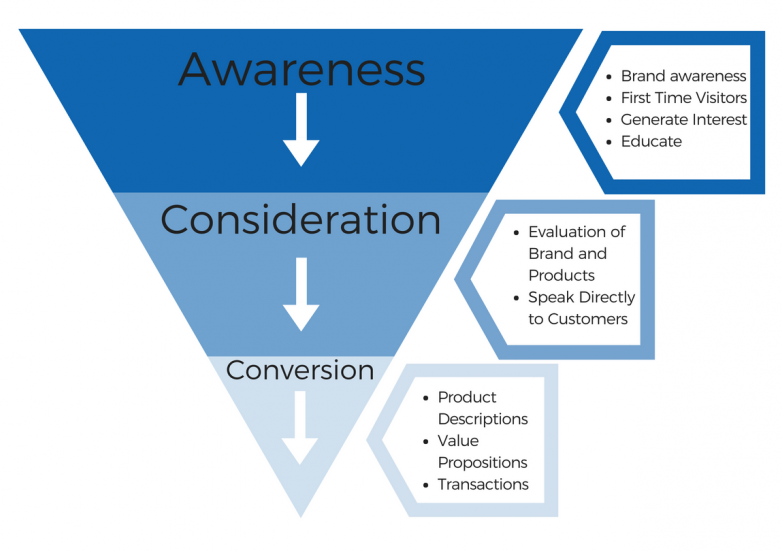
As marketers, we want the funnel to be as cylindrical as possible, with as many customers as possible moving from awareness to conversion.
But many companies are losing sales by failing to define or optimize funnels at all. With only about 3.3% of total site visitors making it to a transaction, there is little room to just “hope for the best” when it comes to conversions. When you fail to define a proper funnel for your business, you will let countless potential customers and conversions slip through the cracks.
Rather than becoming overwhelmed and frustrated in trying to understand how this all works, let’s look at how the idea of a funnel can be simplified and applied to a specific aspect of marketing.
The Content Marketing Funnel
Since funnels can be applied to many aspects of digital marketing, building and using a funnel is especially valuable in content marketing.
A content marketing funnel is a trail (or… well, a funnel) of content leading potential customers through their purchasing journey, targeting content to their interests, behavior, and needs. With highly-specific content, you can nurture potential consumers down the funnel all the way to conversion.
Creating content — everything from blog posts to videos and beyond — is a solid and proven way to bring new customers to your website for the first time and provide them with relevant info.
Content marketing can reach customers at every stage of the marketing funnel.
Top of Funnel: Awareness
At the top of the funnel, your goal is to make people aware of your brand; this could look different to different businesses, depending on your goals, but in the case of digital or content marketing, it typically means a potential customer is arriving at your website for the first time.
During this phase, you can generate interest for your brand and educate visitors on potential problems to be solved with your product or service.
It is uncommon to attract a new site visitor via top-of-funnel content marketing and immediately convert that customer on a purchase. Rather, consider this a form of indirect customer acquisition — if you are creating relevant content they are interested in, they will be more likely to return to your site to consume more content, and potentially convert as a customer later.
In other words, top-of-funnel content is educational, not meant to explicitly promote your business. Any content you create for the top-of-funnel should be relevant to topics that interest your ideal customer; this is not the time to talk about yourself or push your product.
Figure out what your audience wants and educate them on those topics. This strategy can help establish you as an authority in that niche, building trust between your brand and potential customers. As they become more educated on these topics, they will be more likely to purchase your related products or services without feeling sold to.
Tips for Finding Questions Customers May Have in the Awareness Phase
To provide valuable information to your target demographic, you need to find out what questions they are asking. This can be easier said than done, depending on what market your industry is in — but there are certain tools that make it simpler to find out.
Let’s look at a market like the food industry, for example, to break this down:
Look at related search queries to questions your potential customers may be asking. You can do this by typing a question into Google and viewing related questions in the drop-down box, like so: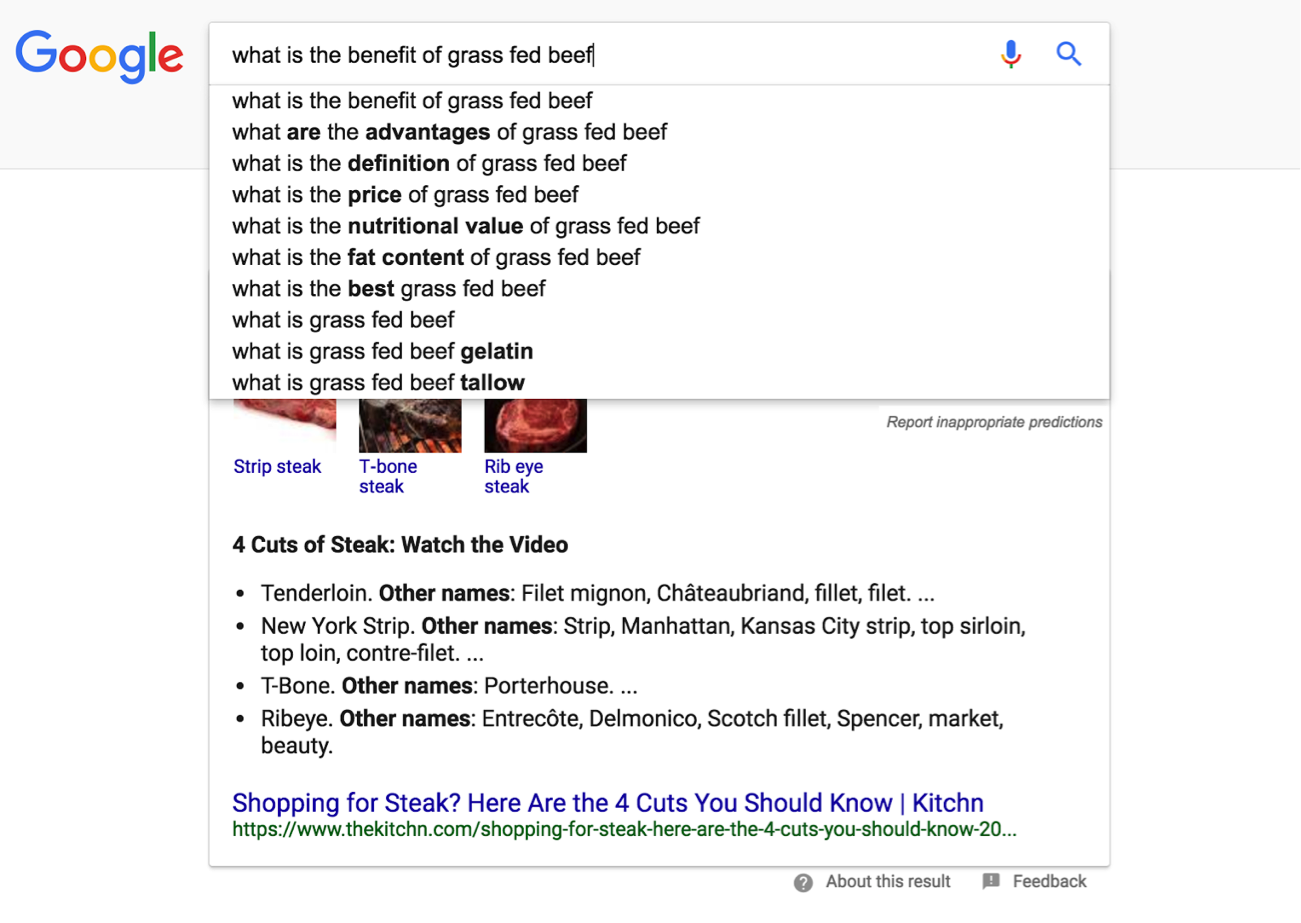

You can use some of the better keyword tools like Soovle or Keyword Planner to find additional questions.
Awareness Phase Content to Create
Blog posts
Interactive pages, games, quizzes
Videos
Webinars or live videos (Facebook, YouTube)
Example of Top-of-funnel Content Marketing Done Right
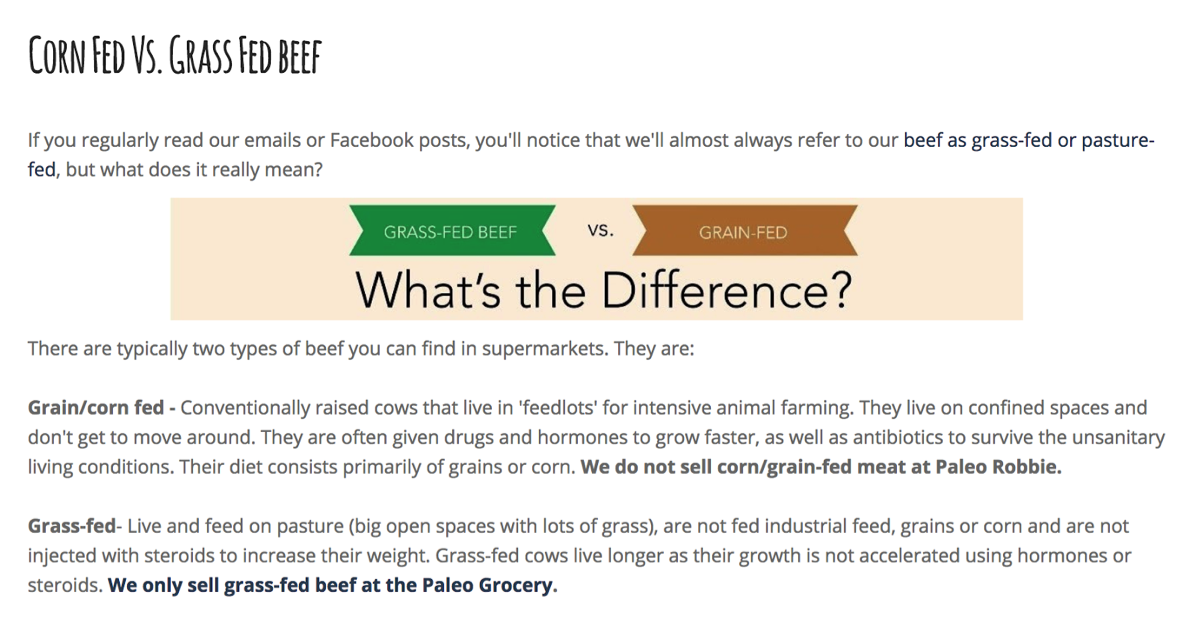
How They Used It In Social Media
Paleo Robbie provided valuable content to readers on how to spot grass fed vs. corn fed beef at a grocery store. As you can see above, they were using Facebook to get initial eyes on the article (and are likely receiving organic traffic via related Google searches as well). Because this content is relevant to their product offering, they can then move people who read the article further down the sales funnel and potentially convince them to use their meal delivery service or order Paleo foods online.
Middle of Funnel: Consideration
The consideration phase is the phase where the customer begins to see your product/service as a solution to their need or problem. They have likely already consumed educational content from you, so now is the time to provide content that helps them evaluate you as a brand or for your offerings.
The consideration phase (also called the evaluation phase) is arguably the most critical point in a buyer’s journey because this is when they’re deciding which solutions are a good fit and which ones aren’t.
Think of the Middle of Funnel as a time to speak directly to a customer and tell them how you can help them. You don’t need to be terribly sales-y — just provide the information your audience needs to make informed decisions about buying from you.
According to Digital Marketer, a thoughtful Middle-of-Funnel campaign can generate 2 to 3 times the return of Top of Funnel content for e-commerce businesses. In other words, now is NOT the time to send out a generic email blast and hope for the best. Treat Middle of Funnel Content like your MVP.
Tips for Finding Questions Customers May Have in the Consideration Phase
This tip will be similar to the process of looking at Google search results, but now you will dive deeper into the questions they may have about the specific qualities, benefits, and drawbacks of your product. Below, you can see in-depth questions that come up when we typed in “benefits of grass-fed beef products” into Google.
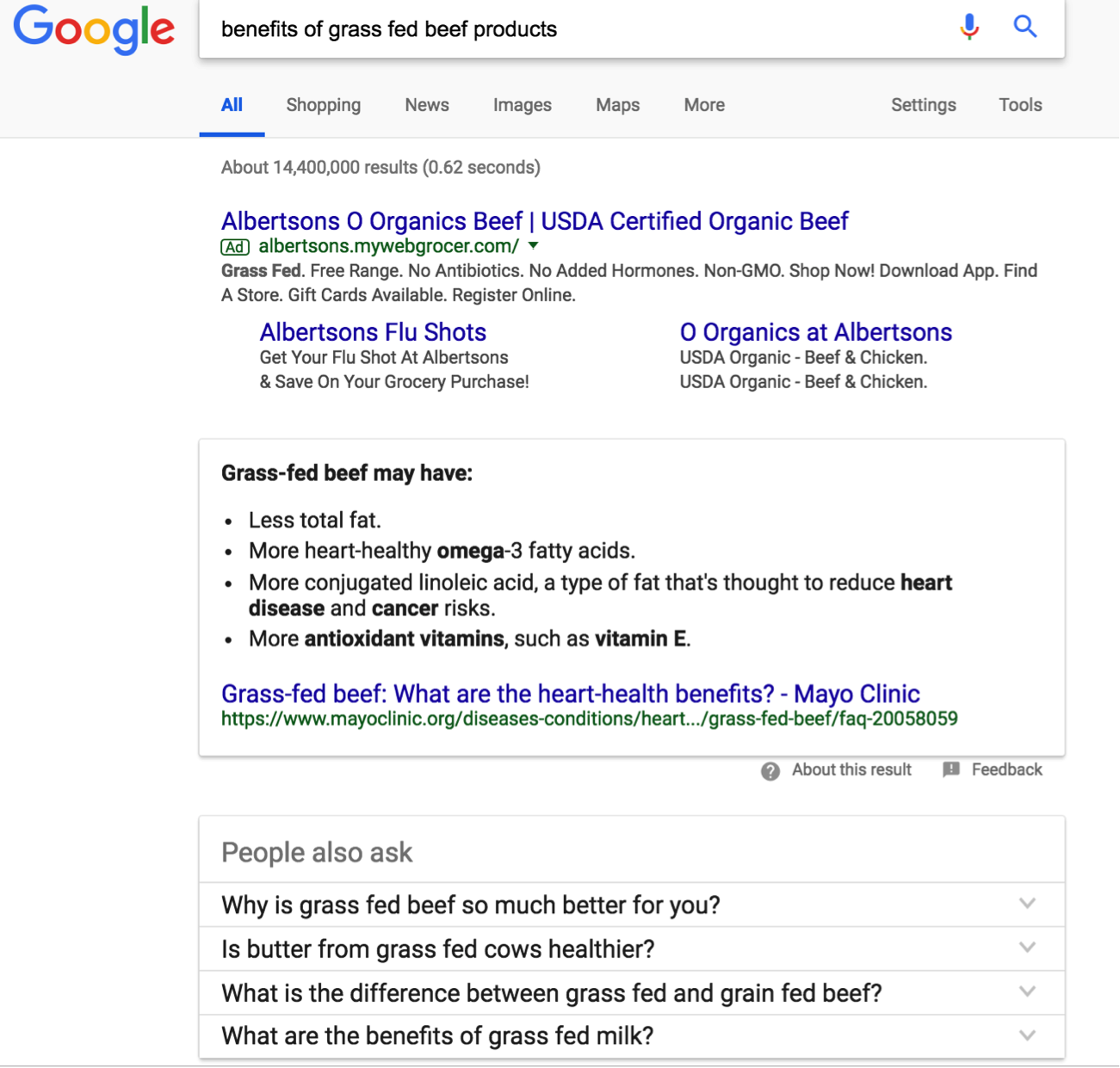
Do some competitive analysis and read the articles and pages that rank on the first page. What information is provided in that content? As you can see in the example above, The Mayo clinic above talks about how grass-fed beef is leaner meat than corn-fed. This information can help you get ideas into what questions people have, how you can answer them, and what valuable information you can provide.
Look at FAQ pages on your competitors’ websites to get ideas for content.
Look at the related content linked in the resources that rank. For example, Drax links to resources for types of recipes that use Beef products:
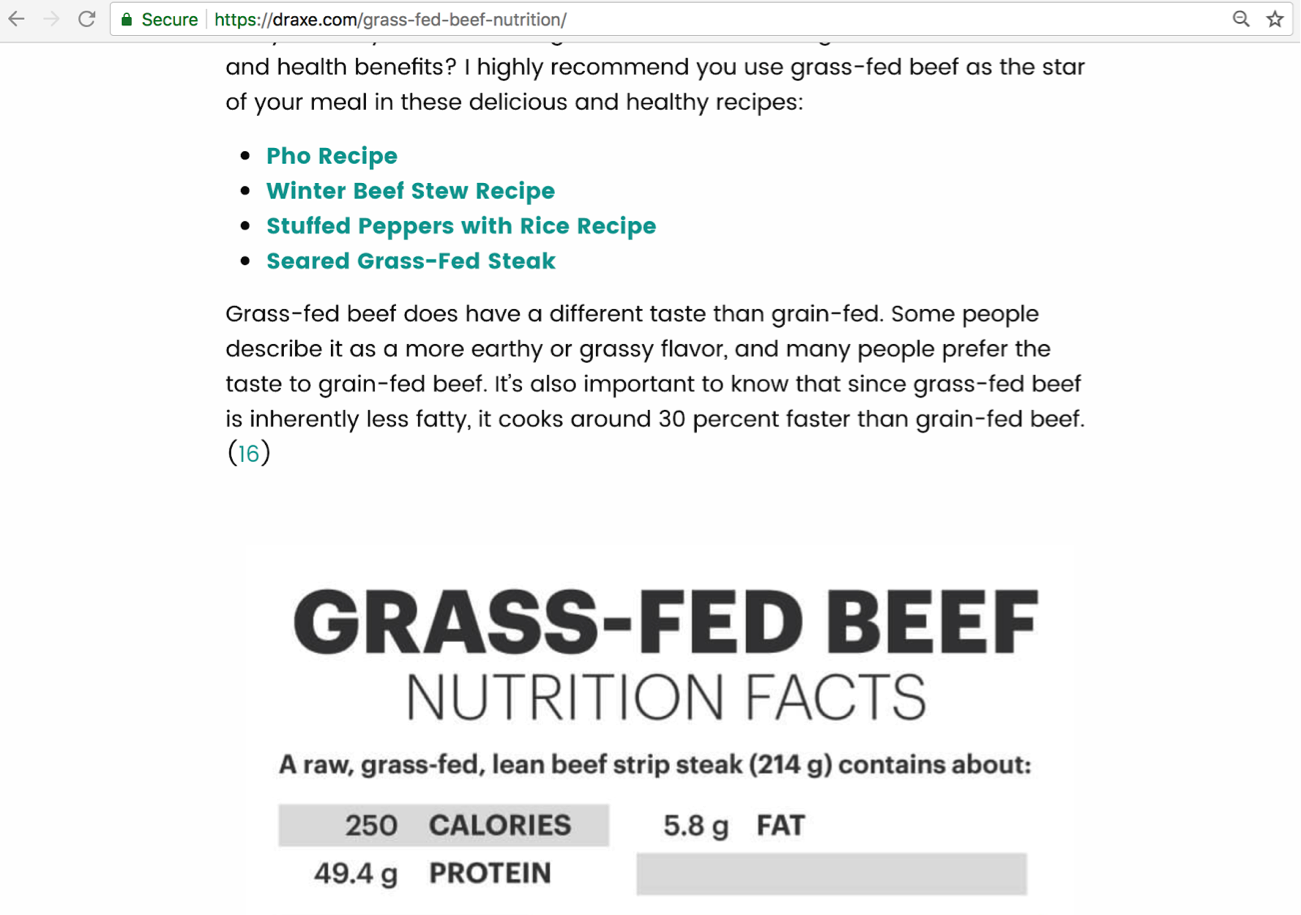
Consideration Phase Content to Create
Product videos, Demo videos
Product descriptions
How-to content, tutorials
Stories/Articles about how your product helped someone
Example of Middle of Funnel Content Done Right
Middle-of-funnel content can still be educational. But unlike top-of-funnel content, it should also present your product as part or all of a solution to a particular problem.
Tactics, an e-commerce skateboard, and snowboard shop posts regular videos to their site with product features and customers reviews. Rather than reading a simple description on a product page, customers can hear from people who are actually using the product and determine if the product will meet their specific needs.
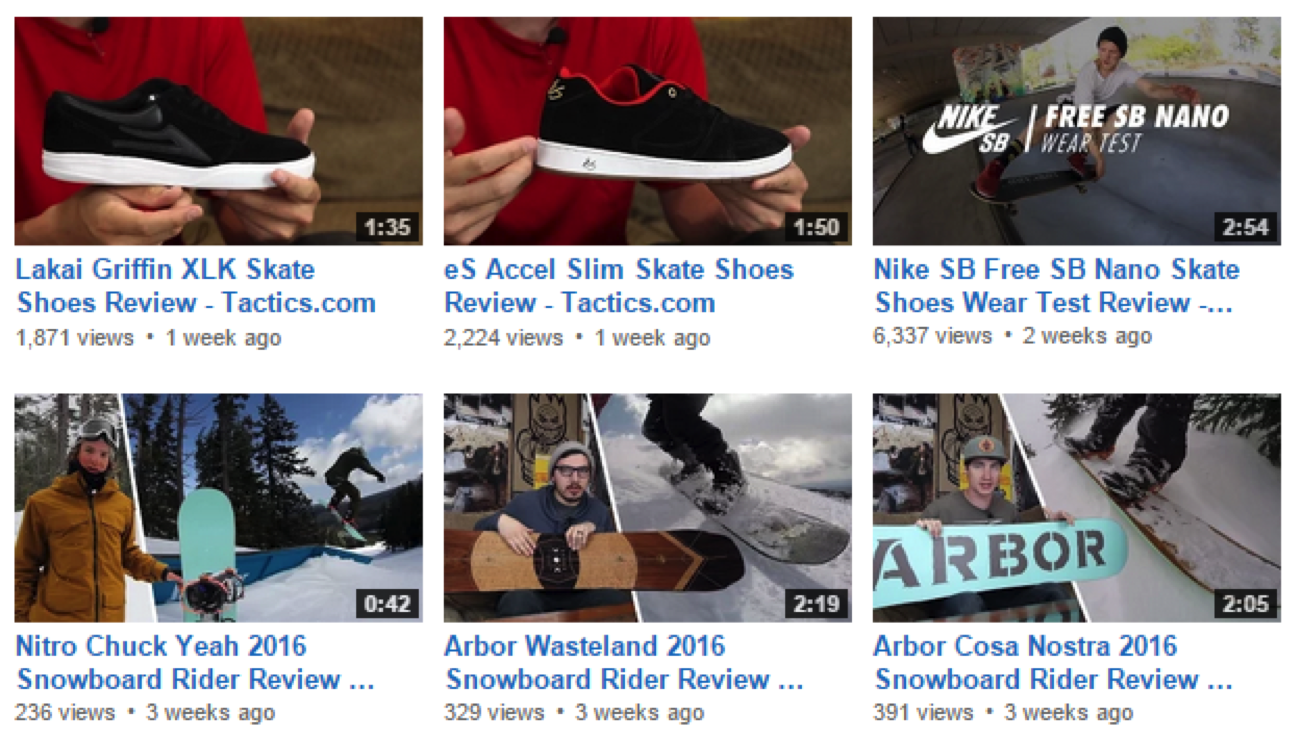
Bottom of Funnel: Conversions
Now that we have reached the bottom of the funnel, our primary goal is transactions with customers. The teeniest, narrowest part of the marketing funnel is the conversion point — our customers know what we have to offer them and how we can potentially solve their problem, but we are convincing them to click “purchase” and follow through.
Bottom-of-funnel content should include value propositions that genuinely drive home the value of the product.
The content can take many forms, For example, a good product description with a solid value proposition is an example of bottom-of-funnel content, as are highly in-depth data sheets or product explanations. You could even have a chart or infographic comparing your products to competitors, or explaining various use-cases.
Bottom-of-funnel content in content marketing will most closely resemble sales materials. Your specific product or offering will determine what your bottom of funnel content looks like.
Conversion Stage Content to Create
Product descriptions
Customer reviews and testimonials
Bottom-of-Funnel Content Done Right
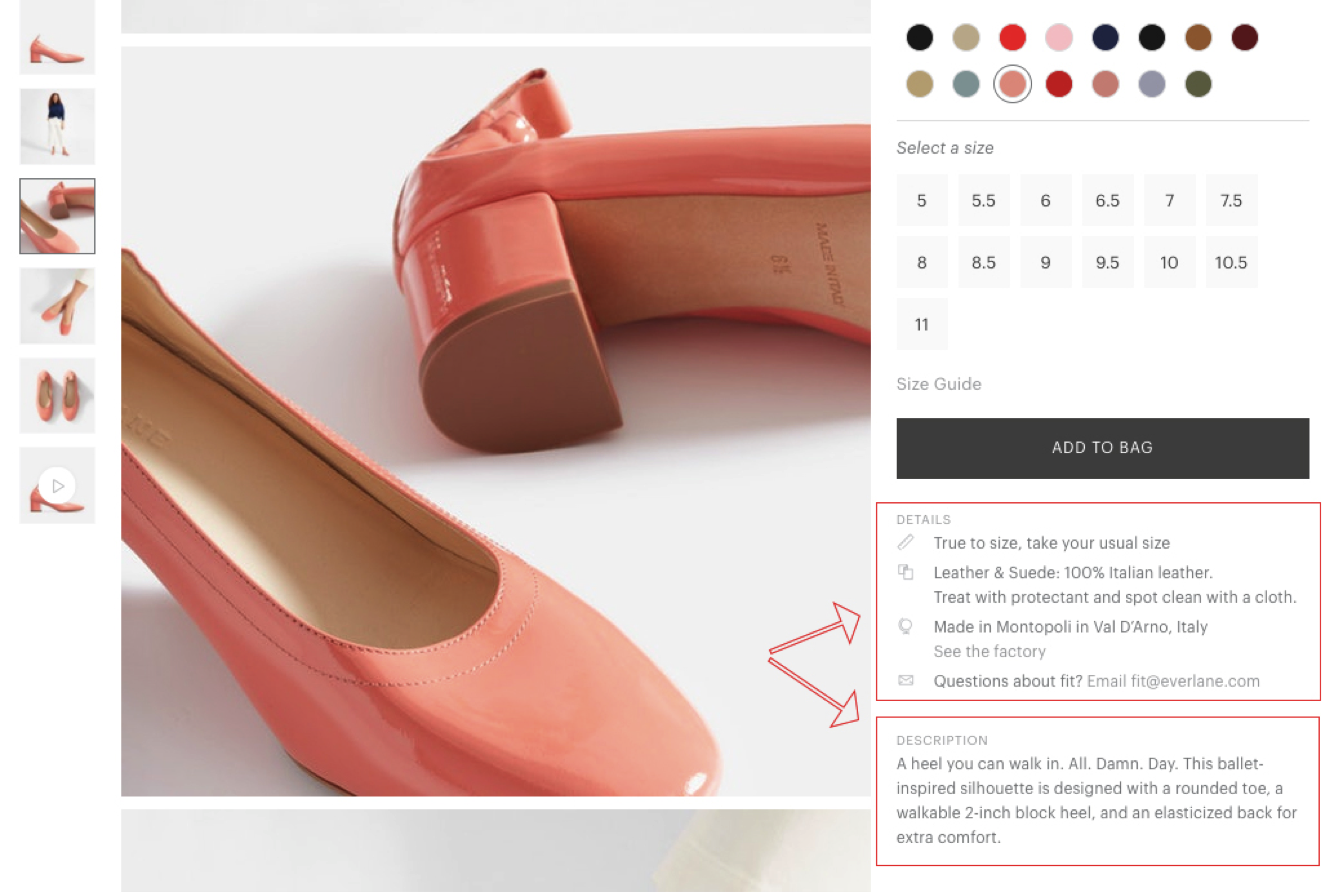
See here how online clothing retailer Everlane provides both the must-know info (sizing, material) while using the description to truly drive home the value of the product: An ultra-comfortable modern heel that women can walk, walk, walk in.
Compelling product literature and descriptions are exactly the type of bottom-of-funnel content that can sway a customer’s decision.
Now it is time to put all of this info into action.
To see how one company — a dog-walking app called wag — leveraged content at every phase of a buyer’s journey, take a look at this content marketing case study about what they did and how it worked for them.
Be sure to share with us your content marketing funnel tips in the comments below.
Innovative SEO services
SEO is a patience game; no secret there. We`ll work with you to develop a Search strategy focused on producing increased traffic rankings in as early as 3-months.
A proven Allinclusive. SEO services for measuring, executing, and optimizing for Search Engine success. We say what we do and do what we say.
Our company as Semrush Agency Partner has designed a search engine optimization service that is both ethical and result-driven. We use the latest tools, strategies, and trends to help you move up in the search engines for the right keywords to get noticed by the right audience.
Today, you can schedule a Discovery call with us about your company needs.
Source:





